Stringed Instruments Guide
Type of stringed instrument (guitar, violin, cello, etc.)
There are several popular stringed instruments to choose from, each with its own unique characteristics and playing styles.
For guitar enthusiasts, there are various options available. The Fender Stratocaster is a classic electric guitar known for its versatile sound and iconic design. It features three single-coil pickups, a contoured body, and a tremolo bridge for pitch bending. On the acoustic side, the Taylor 214ce is a great choice. It boasts a solid Sitka spruce top, layered rosewood back and sides, and the Expression System 2 pickup for great amplified sound.
If you are more inclined towards the world of classical music, the Yamaha YEV105NT Electric Violin is worth considering. This innovative electric violin comes with a unique design, advanced pickup system, and a dual-piezo bridge for accurate sound reproduction. On the acoustic side, the Antonio Stradivari "Cremonese" 1715 Replica Violin is a high-end option crafted with precision to replicate the iconic sound of the original Stradivarius instruments.
For those passionate about orchestral music, the D'Addario NS Electric Cello is an excellent choice. It features an adjustable ebony tailpiece, integrated fine tuners, and a lightweight frame for comfort during performances. Alternatively, the François Xavier Tourte Fleur de Lys Violoncello Bow is a professional-grade bow, meticulously handcrafted with Pernambuco wood, sterling silver winding, and a mother-of-pearl inlay frog.

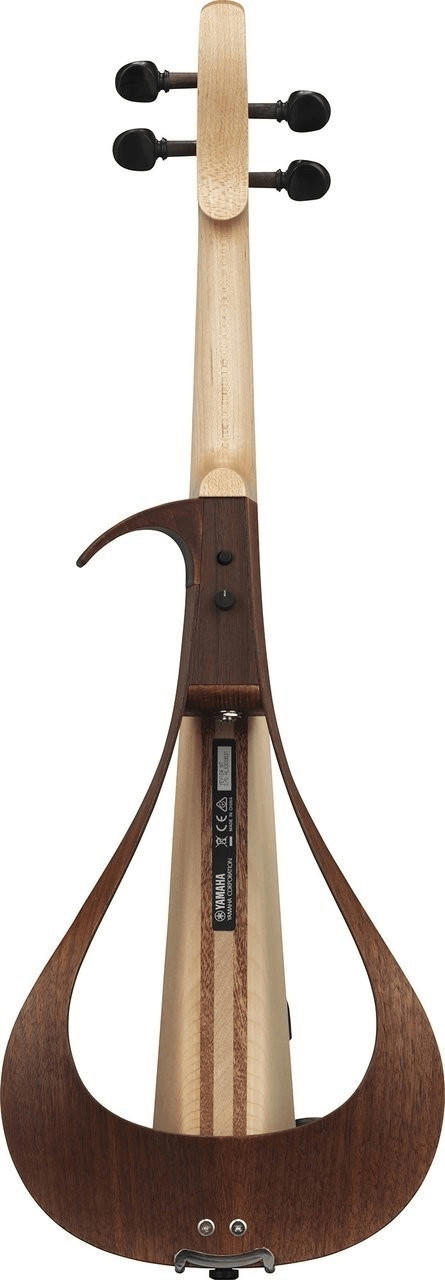
Regardless of the type of stringed instrument you choose, it is vital to consider additional factors such as skill level, budget, and personal preferences to ensure you find the perfect match for your musical journey.
Size or scale length
The size of the instrument not only affects playability and comfort, but also the tone and projection. For example, if you are looking for an electric guitar, the Fender Stratocaster (Fender Stratocaster) and Gibson Les Paul (Gibson Les Paul) are both popular choices with different scale lengths. The Stratocaster typically has a shorter scale length of around 25.5 inches, which gives it a brighter tone and adds more tension to the strings. On the other hand, the Les Paul has a longer scale length of around 24.75 inches, which promotes a fatter and warmer tone. Another example is the violin. For beginners or young players, the Stentor Student I (Stentor Student I) is often recommended due to its smaller size of 1/4, 1/2, 3/4 or 4/4 scale options. For advanced or professional players, they usually go for a full-size violin, such as the Yamaha SV-250 silent electric violin (Yamaha SV-250), which offers a standard scale length of about 13 inches.



Material of the body/structure
Different materials can drastically affect the sound and playability of the instrument. One popular material choice for acoustic guitars is solid wood, which can produce a warm and rich tonal quality. Good examples of acoustic guitars made from solid wood include the Martin D-28 and the Taylor 814ce. Another option to consider is laminate wood, which is more affordable but may not offer the same level of resonance and tonal complexity as solid wood. An excellent laminate wood acoustic guitar is the Yamaha FG800, which offers a balanced sound and durable construction. In the electric guitar segment, instruments like the Fender Stratocaster and the Gibson Les Paul are well-known for their solid wood bodies, which contribute to their distinct sonic characteristics.
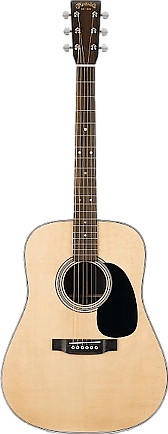
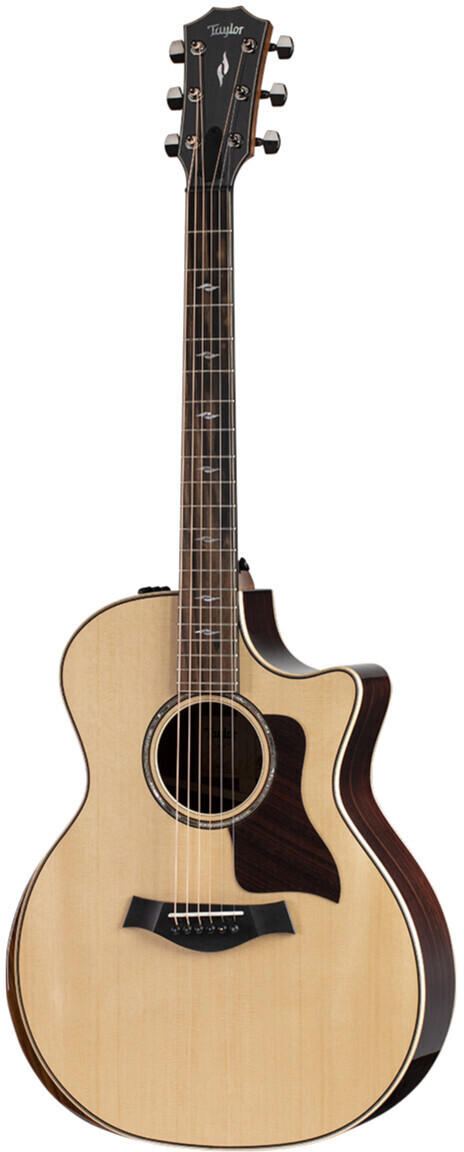


Type of wood used
The type of wood affects the tone, resonance, and overall quality of the instrument. Mahogany, for example, is often used for the neck, back, and sides of acoustic guitars due to its warm and rich sound. One exceptional product that highlights the use of mahogany is the Martin D-28 Acoustic Guitar. This classic instrument boasts a solid Sitka spruce top with solid East Indian rosewood back and sides for a well-balanced tone. On the other hand, maple is commonly used for the back and sides of violins and cellos, providing a bright and focused sound. The Yamaha SV-200 Silent Electric Mganetic 4/4 Violin features a maple body, allowing for clear and resonant tones.
Other types of wood, like rosewood and ebony, are chosen for fingerboards due to their durable and smooth surface. One reputable cello, the Yamaha SVC-210SK Electric Cello, incorporates an ebony fingerboard, giving it a smooth and comfortable playing experience. In the market, stringed instruments can also be categorized by the combination of different wood types. For instance, acoustic guitars with a solid spruce top paired with rosewood back and sides, such as the Taylor 814ce Grand Auditorium Acoustic-Electric Guitar, deliver a balanced and expressive sound. Overall, understanding the type and combination of woods used in stringed instruments is crucial in finding the perfect match for your musical journey.

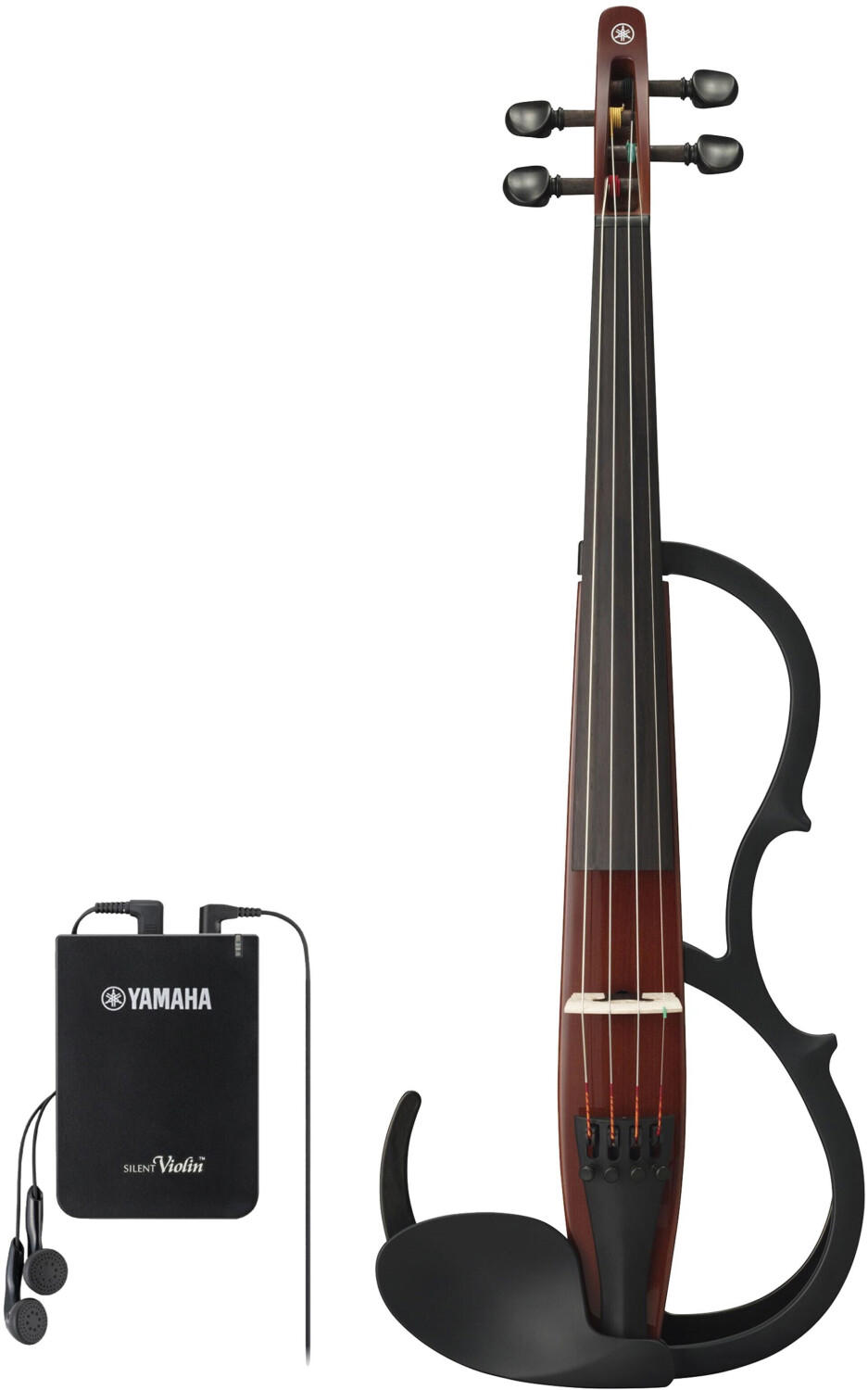

Number of strings
This factor not only determines the complexity of the instrument but also affects the type of music that can be produced. For beginners or those looking for simplicity, instruments with fewer strings are preferable. The 'Yamaha SLG200N' silent classical guitar, for instance, is an excellent choice for acoustic guitar enthusiasts. It features six nylon strings and offers authentic classical acoustic sound. On the other hand, if you are interested in more versatility and a wider range of notes, a seven-string guitar like the 'Ibanez RG Series RGA742FM' electric guitar may be a perfect fit. Adding an additional string expands the tonal range and provides greater flexibility for more advanced players.
Other alternatives include instruments with even more strings, such as the 'Ortega Hydra DSS-U' acoustic ukulele with eight strings, which produces a fuller sound and provides a melodic range beyond the standard four-string ukuleles. For those seeking a different playing experience, the 'NS Design WAV5 RADIUS' bass guitar offers an electric bass option with a remarkable number of strings. With its innovative design, the NS RADIUS bass guitar boasts 5 strings and a solid-body construction, making it a popular choice among electric bass players who desire enhanced expression in their sound. Remember, the number of strings is essential in determining the creativity and musical possibilities an instrument can offer, so choose wisely according to your preferences and playing style.
String gauge
String gauge refers to the thickness or diameter of the strings on the instrument and can greatly influence the sound and playability. There are generally light, medium, and heavy gauge strings available in the market. Light gauge strings are thinner and easier on the fingers, making them ideal for beginners or players seeking a lighter touch. A popular light gauge string option for acoustic guitars is the Elixir 80/20 Bronze Acoustic Guitar Strings, which offer a warm and bright tone. Medium gauge strings provide a balance between playability and tone and are commonly used by intermediate players. For electric guitar players, the Ernie Ball Super Slinky Nickel Wound Electric Guitar Strings in medium gauge are known for their versatility and durability. For players who prefer a fuller and bigger sound, heavy gauge strings are recommended. One example is the D'Addario EXP Coated Phosphor Bronze Acoustic Guitar Strings in heavy gauge, which produce a rich and resonant tone.
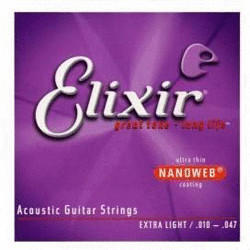
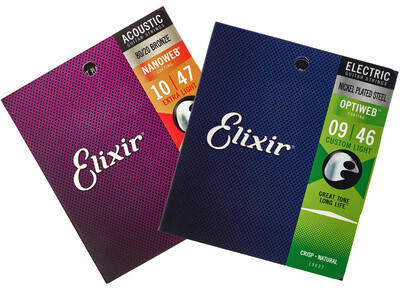
Type of strings (steel, nylon, gut, etc.)
The type of strings you choose can greatly impact the sound and playability of the instrument. There are several types of strings available, including steel, nylon, gut, and synthetic materials.
Steel strings are often used on acoustic guitars and provide a bright and loud sound. They are durable and produce a strong projection and sustain, making them ideal for genres such as rock, blues and country. Some popular steel string brands include Elixir Nanoweb Phosphor Bronze Acoustic Guitar Strings and D'Addario EXP16-3D Coated Phosphor Bronze Acoustic Guitar Strings.
Nylon strings, on the other hand, are commonly used on classical guitars. They produce a warm and mellow sound and have a softer feel, which makes them easier on the fingers. Notable nylon string choices include D'Addario EJ45 Pro-Arte Nylon Classical Guitar Strings and Savarez 500CJ Corum Cristal Classical Guitar Strings.
For those who prefer a more vintage or traditional sound, gut strings are an option. They are made from natural gut fibers and provide a warm and rich tone, but they require careful handling and maintenance. Popular gut string choices include those by Pirie Natural Gut Violin Strings and La Bella Gut Bass Strings.

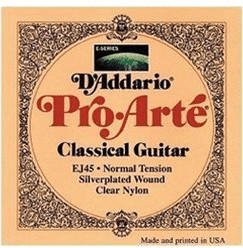
Lastly, synthetic strings are a more versatile option that can cater to different aesthetics and music genres. They can mimic the sound characteristics of various types of strings while offering enhanced durability and stability. For example, Thomastik-Infeld Dominant Violin Strings are known for their synthetic core with a versatile sound suitable for both classical and jazz playing styles.

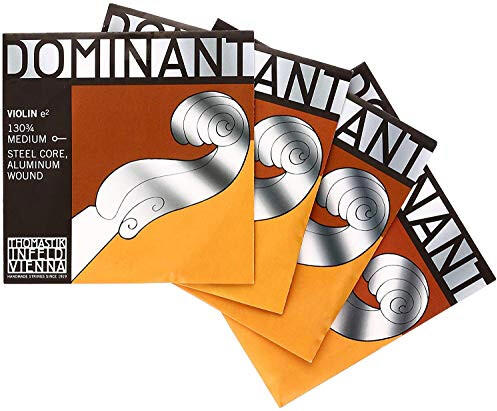

Tuning mechanism (pegs, tuning machines)
The tuning mechanism refers to the pegs or tuning machines used to adjust the tension of the strings and achieve the desired pitch. Pegs are traditionally used on instruments like violins, violas, and cellos, while tuning machines are commonly found on guitars and basses.
For those considering stringed instruments with pegs, it is important to look for high-quality ebony pegs or rosewood pegs that provide stability and durability. Instruments such as the Yamaha SV-250 silent violin or the Handcrafted Artist Violin P31 offer secure and precise tuning with reliable pegs.
On the other hand, tuning machines are featured on guitars and basses. When selecting a guitar, make sure the tuning machines, also known as tuners or machine heads, are smooth and reliable for accurate tuning. Instruments like the Fender American Professional II Telecaster or the Gibson Les Paul Standard '50s showcase top-notch tuning machines that offer quick and precise adjustments.

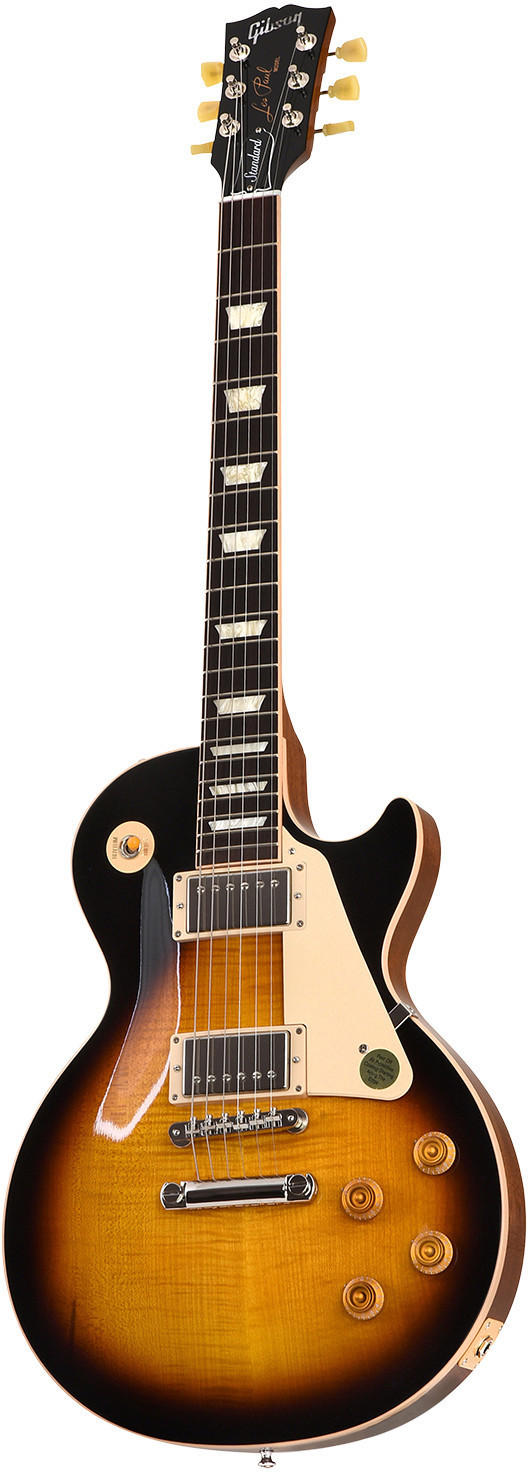

It's important to note that within each segment of stringed instruments, there are various other models available that also offer reliable tuning mechanisms. Ensure to research and compare specifications to find the best-fit instrument for your needs.
Fingerboard material
One common fingerboard material is rosewood, known for its warm and rich sound. An example of a quality instrument that features a rosewood fingerboard is the Martin D-28 Acoustic Guitar, which boasts a solid Sitka spruce top and East Indian rosewood back and sides. Another popular fingerboard material is ebony, which offers a bright and articulate tone. The Fender American Professional II Stratocaster is a great option that features an ebony fingerboard, perfect for classic rock or blues enthusiasts. Some instruments may also use synthetic materials such as Richlite, a durable and sustainable substitute for ebony, as seen in the Gibson ES-335 Dot Electric Guitar. Overall, the fingerboard material is an important consideration to achieve the desired sound and playability in a stringed instrument.

Bridge type
There are different types of bridges commonly used in stringed instruments, including the classic imitated maple bridge, the French style lightweight bridge, and the German style Delrin bridge. The maple bridge is known for its durability and ability to transmit vibrations effectively, resulting in a well-balanced sound. Instruments like the ADM Beginner Violin Outfit come with a maple bridge that ensures a clear and warm tone.
On the other hand, the French style bridge is preferred by many professional players due to its light weight and flexibility, allowing for a greater tonal range. High-end violins like the D Z Strad Model 700 Violin come with a French style bridge that enhances the instrument's responsiveness and projection. Additionally, the German style Delrin bridge provides stability and longevity, making it an excellent choice for advanced players. Recommended for cello players is the Prim Deluxe Violin/Cello Bridge made with quality Delrin material that offers excellent resonance and a sense of balance. Ultimately, carefully considering the type of bridge can significantly contribute to finding the best and right stringed instrument.
Tailpiece type
The tailpiece is the part of the instrument that holds the strings and can greatly affect its sound and playability. There are various types of tailpieces to choose from, each with its own advantages and characteristics.
One popular type is the Ebony tailpiece, known for its durability and resonance. It is often used in high-end violins and provides a rich, warm sound. An example of such a tailpiece is the Kun Original Tailpiece, made from select hardwood and designed to enhance the tonal quality of the instrument.
Another type is the Carbon fiber tailpiece, which is lightweight and often used in modern violins. It offers improved stability and balance, leading to better projection and response. A well-known brand that produces carbon fiber tailpieces is Wittner, with their Wittner Ultralight Tailpiece being a popular choice among professional musicians. It is crafted from high-quality synthetic materials, providing a clear and focused sound.
Lastly, there are innovative designs like the Wittner FineTune Tailpiece and Optical Violin Tailpiece. These tailpieces have integrated fine-tuning mechanisms, allowing for quick and easy string adjustments without the need for additional tools. The Wittner FineTune Tailpiece includes integrated geared tuners, while the Optical Violin Tailpiece features a built-in tuner that displays the string's pitch through a small screen. These tailpieces are ideal for musicians who frequently need to make precise tuning changes during rehearsals or performances.
Body shape
There are several common body shapes to choose from, each designed to produce a distinct tone and offer different levels of comfort. The 'Dreadnought' shape is known for its bold and powerful projection, making it ideal for players who prefer a loud and booming sound. A great example of a dreadnought-shaped guitar is the Yamaha FG800 which features a solid spruce top and nato/okume back and sides for a well-balanced tone. On the other hand, the 'Concert' shape is smaller and more comfortable to hold, making it well-suited for players with smaller hands or those who prioritize comfort. The Cordoba C5 is a fantastic option for a concert-shaped classical guitar that offers a warm and mellow sound, thanks to its solid cedar top and mahogany back and sides. Lastly, the 'Grand Auditorium' shape strikes a balance between the boldness of a dreadnought and the comfort of a concert shape. The Taylor 314ce is an outstanding example of a grand auditorium acoustic-electric guitar, featuring a solid Sitka spruce top and solid sapele back and sides for a versatile and clear tone.
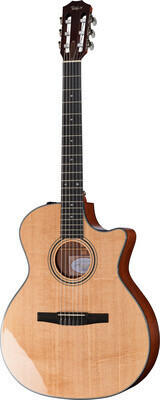
Sound quality
The sound quality refers to the tone, resonance, and overall projection that the instrument produces. It is influenced by various factors, such as the materials used, craftsmanship, and design. For example, Fender American Professional II Stratocaster is renowned for its exceptional sound quality, attributed to features like the upgraded V-Mod II pickups, which offer a rich, articulate tone. Similarly, the Yamaha YTS-62III Tenor Saxophone is renowned for its impeccable sound quality due to its high-quality brass material and a newly designed neck that allows for improved airflow and tonal resonance. In the segment of acoustic guitars, Taylor 814ce Grand Auditorium stands out with its impressive sound quality, thanks to the combination of a Sitka spruce top, Indian rosewood back and sides, and Taylor’s Expression System 2 electronics that faithfully capture the guitar's rich tone. Remember, ensuring exceptional sound quality is crucial in choosing the best and right stringed instrument for you.
Sound projection
Sound projection refers to how well the instrument resonates and produces sound that can be heard clearly and loudly. This is particularly crucial for musicians who perform in large venues or orchestras, as they need an instrument that can project its sound to reach the audience.
One example of a stringed instrument with exceptional sound projection is the Yamaha Silent Violin. Designed with a pickup system and built-in reverb, this violin produces a powerful and resonant sound that can fill a concert hall effortlessly. Additionally, it offers an adjustable sound post, which allows musicians to fine-tune the projection based on their playing style and preference.
For guitar enthusiasts, the Taylor 814ce Grand Auditorium Acoustic-Electric Guitar is highly regarded for its excellent sound projection. With its Grand Auditorium body shape and solid Sitka Spruce top, this guitar delivers a strong projection and balanced tone, making it an ideal choice for professional musicians seeking a versatile instrument that excels both in live performances and studio recordings.
In the world of classical guitars, the Cordoba C12 cedar-top classical guitar stands out with its superior sound projection. Constructed with a solid Canadian cedar top and Indian rosewood back and sides, this guitar resonates with rich and powerful sounds, allowing players to effortlessly fill a concert hall with their music.

These examples showcase how various stringed instruments excel in sound projection, ensuring that musicians can effectively communicate their music to their audience.
Weight
The weight of a stringed instrument can have an impact on the ease of playability, comfort, and overall performance. Lighter instruments tend to be more suitable for beginners or those looking for an instrument that is easy to carry and maneuver. On the other hand, heavier instruments are often preferred by professional musicians for their rich tonal qualities and stability.
If you are looking for a lightweight stringed instrument, one option to consider is the 'Stagg M50E' Mandolin, which weighs just 2.2 pounds. This instrument offers a spruce top, a rosewood fingerboard, and a maple back and sides, ensuring high-quality sound production while being lightweight and easy to handle. Another option is the 'Ibanez AEG10NII' Classical Acoustic-Electric Guitar, which weighs a mere 4.6 pounds. With its slim body, mahogany neck, and solid spruce top, this guitar delivers a balanced and warm sound, while remaining lightweight and comfortable during long performances.
Portability
This is particularly important for musicians who are constantly on the go or desire an instrument that is lightweight and easy to transport. A great example of a highly portable stringed instrument is the Traveler Guitar Ultra-Light Nylon Classical Acoustic-Electric Guitar. With a compact and slim body design, it weighs only 2.8 pounds, making it incredibly lightweight and easy to carry. Additionally, with a detachable lap rest, it can fit into the overhead compartments of most airlines and is perfect for those who frequently travel. Another option to consider is the Yamaha APX600 Thin-Body Acoustic-Electric Guitar. With a thin-profile, single-cutaway body, it offers portability without compromising on sound quality. Featuring a durable spruce top and a slim neck, this guitar is designed for players in need of a highly portable and comfortable instrument. Other portable options include The Loar LH-319-VS Archtop Acoustic Guitar and the Kala KA-SCG Solid Spruce Top Concert Ukulele.
In terms of segmentation, portable stringed instruments can be divided into different groups based on their size and design. One such group is the "travel guitars," which are specifically designed to be compact and portable. Examples include the Traveler Guitar Ultra-Light Nylon Classical Acoustic-Electric Guitar and the Martin Steel String Backpacker Acoustic Guitar. Another group is the "thin-body guitars," which maintain a slim design while still offering a full sound. In addition to the aforementioned Yamaha APX600, the Ibanez AEWC32FM Thinline Cutaway Acoustic-Electric Guitar belongs to this category. Lastly, "compact ukuleles" should be mentioned, such as the Kala KA-SCG Solid Spruce Top Concert Ukulele, which features a concert-sized body perfect for travelling musicians seeking a portable and versatile instrument.
Ease of maintenance
Some instruments require more regular maintenance and repairs, while others are easier to care for and keep in good condition. One example of a stringed instrument that provides ease of maintenance is the Kala KA-15S Mahogany Soprano Ukulele. This ukulele is made with a mahogany body and neck, which ensures durability and resistance to cracks or warping. Additionally, it features geared tuners that help to keep the ukulele in tune for an extended period of time, minimizing the need for constant retuning. The Fender American Professional II Precision Bass is another great option, specifically designed for bass players. It offers a satin-finished neck that allows for effortless movement up and down the fretboard while reducing the "stickiness" that can occur with some other instruments, making it easier to maintain and play.
In the market, stringed instruments can be grouped into three segments based on their maintenance requirements. Firstly, there are beginner or entry-level instruments that are typically designed with ease of maintenance in mind. Examples include the Yamaha FG800 Acoustic Guitar and the Stagg M50E Mandolin, both featuring durable construction and low maintenance components. Secondly, there are mid-range instruments that strike a balance between quality and ease of maintenance. The Epiphone Les Paul Standard PlusTop Pro Electric Guitar and the Deering Goodtime 2 5-String Banjo fall into this category, offering great playability and requiring minimal upkeep. Finally, premium or professional instruments like the Taylor 814ce Grand Auditorium Acoustic-Electric Guitar and the Gibson SG Standard 2020 Electric Guitar provide top-notch performance and are often built with innovative features that make maintenance a breeze, such as self-lubricating tuning systems and high-quality materials that resist wear and tear.


Quality of construction
Look for instruments that are crafted with precision and attention to detail, as this indicates a higher level of craftsmanship and overall quality. For example, the Yamaha YAS-280 Alto Saxophone is known for its exceptional construction. It features a gold lacquered body, high F# key, and adjustable thumb rest, resulting in a durable and comfortable saxophone. Similarly, the Ibanez RG550 Electric Guitar boasts a quality construction with a basswood body, maple neck, and rosewood fingerboard. This guitar delivers excellent playability and resonance for a professional-level instrument.
Durability
You want an instrument that can handle the wear and tear of regular use and last for a long time. One example of a durable instrument is the Yamaha FG800 Acoustic Guitar. Made with a solid spruce top and a nato/okume back and sides, this guitar is not only sturdy but also delivers a rich and vibrant tone. Additionally, the instrument features a scalloped bracing pattern that enhances its durability while allowing for better resonance and sound projection.
In the realm of violins, the Stentor II Student Series Violin is a top choice for durability. Designed for beginners and students, this violin is handcrafted with a solid spruce top, solid maple back and sides, and features a hard-wearing ebony fingerboard. Its durability is further enhanced by the inlaid purfling, which reinforces its construction against cracks or damage. With its robust design, the Stentor II Student Series Violin ensures the instrument can withstand the demands of daily practice and early learning stages.

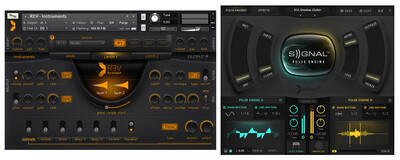
Playability
Playability refers to how comfortable and easy the instrument is to play, including its ease of fingering, responsiveness to touch, and overall feel. High-quality instruments that excel in playability provide a smooth and effortless playing experience for musicians at any level. For example, the Taylor 914ce Grand Auditorium Acoustic-Electric Guitar is highly regarded for its exceptional playability, thanks to its slim neck profile and the advanced Expression System 2 electronics that capture every nuance of your playing. Another top contender in playability is the Yamaha YEV104NT Electric Violin, praised for its comfortable body shape, lightweight design, and beautiful acoustic timbre it delivers.
In the market, stringed instruments can broadly be classified into acoustic and electric categories. In the acoustic segment, renowned choices known for their outstanding playability include the Martin D-28 Acoustic Guitar and the Gibson Hummingbird Standard Acoustic-Electric Guitar. These instruments not only offer exceptional playability but are also known for their rich, balanced tones and impeccable craftsmanship. In the electric category, the Fender American Professional II Stratocaster and the Ibanez RG550 Electric Guitar are favored for their excellent playability, versatile sound options, and smooth action. These are just a few examples of instruments that prioritize playability and provide musicians with an enjoyable and effortless playing experience.


Level of expertise of the player (beginner, intermediate, professional)
For beginners, it is recommended to start with more affordable and durable instruments that are easy to play and require less maintenance. For example, the Yamaha CGS102AII Classical Guitar is an excellent choice for beginner guitarists as it features a spruce top, meranti back and sides, and a nato neck, which creates a balanced and warm sound. Another option for beginners is the D'Addario Prelude Violin String Set, designed specifically for novice violinists with a solid steel core that provides a clear and focused tone.
For intermediate players who have developed a certain level of proficiency, more advanced instruments with superior craftsmanship and tonal quality can enhance their musical expression. The Fender American Professional II Stratocaster electric guitar is a fantastic choice for intermediate guitarists, offering a comfortable playability and impressive versatility with its V-Mod II pickups and curved neck heel. Intermediate violinists may consider upgrading to the Stentor 1500 4/4 Violin Outfit, which features a solid carved spruce top and solid carved maple back and sides, delivering a rich and resonant sound.
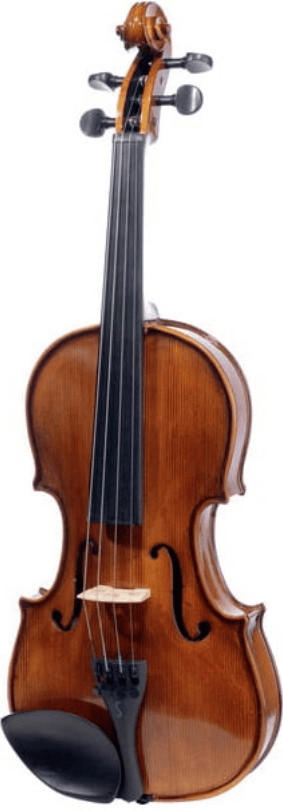
Professional players require instruments of the highest caliber that can meet their artistic demands. The Gibson Les Paul Standard 50s electric guitar is revered by professionals worldwide, meticulously crafted with a mahogany body and neck, and Burstbucker pickups, producing a powerful and vintage tonal character. For professional violinists, the Strativarius Violin Replica is a coveted instrument renowned for its unparalleled craftsmanship, superior tone and projection, often handcrafted by renowned luthiers in specialized workshops. Note that the prices for professional-level instruments can vary greatly depending on the brand and individual specifications.
Sound versatility (acoustic, electric, both)
Some instruments are designed specifically for acoustic sound, some for electric sound, and some offer both options. If you're looking for an acoustic sound, instruments like the Taking D20 Acoustic Guitar and the Yamaha FG800 Acoustic Guitar are great options. These guitars are designed primarily for traditional acoustic sound, with features like solid spruce tops and mahogany backs and sides. On the other hand, if you prefer an electric sound, instruments like the Fender Stratocaster Electric Guitar and the Gibson Les Paul Electric Guitar are highly recommended. These guitars are built with pickups and a versatile modular system, allowing you to produce a wide range of electric sounds. And for musicians who want the best of both worlds, the Taylor T5z Classic Electric/Acoustic Guitar is a top choice. This guitar features an advanced combination of acoustic and electric elements, allowing you to switch between acoustic and electric sounds seamlessly. So when selecting a stringed instrument, remember to consider whether you want an acoustic sound, an electric sound, or both.


Amplification options (acoustic-electric models)
Acoustic-electric models provide the versatility of being able to play both acoustically and plug into an amplifier or sound system. These instruments typically feature built-in electronic components such as pickups or microphones that capture the sound and transmit it through an amplifier.
If you're looking for an acoustic-electric guitar, the Taylor 214ce is a great choice. This model features the Taylor Expression System 2 electronics, which includes a custom-designed pickup that faithfully captures the natural tones of the guitar. The body is made from solid Sitka spruce on top, layered rosewood back and sides, and a sleek Grand Auditorium shape, providing a balanced and versatile sound.
For violin players, the Yamaha SV-250 is a highly regarded acoustic-electric model. This professional-level instrument features a unique dual pickup system with both piezo and body sensors for accurate sound reproduction. Coupled with its solid spruce top, maple back and sides, and ebony fingerboard, the SV-250 delivers outstanding tone and response.
When it comes to amplification options in stringed instruments, it's important to weigh factors like the quality of pickups or sensors, construction materials, and overall tone. With products like the Taylor 214ce and Yamaha SV-250, you can be sure to find excellent acoustic-electric options that enhance your playing experience.
Comfort of playing (ergonomics)
A comfortable instrument can minimize strain on your body, allowing for longer practice sessions and improved technique. Look for features such as a slim-profile neck that fits well in the hand, a smooth fingerboard for easy navigation, and adjustable bridge and tailpiece for personalized playing preferences.
For guitar players, the Ibanez RG550 is an excellent choice with its comfortably contoured body and thin Wizard neck. It also features a recessed tremolo system for palm muting and effortless string bending. Bass players should consider the Fender Jazz Bass, known for its sleek neck shape and offset waist design that sits comfortably against the body. Traditional violinists can benefit from the ergonomic design of the playing position on modern electric violins such as the Yamaha SV-200 Silent Violin, which feels familiar while reducing strain on the arms and shoulders.


Aesthetics/appearance
The first thing to consider is the overall design and finish of the instrument. For example, if you are looking for a classical guitar, the Yamaha C40 Classical Guitar stands out with its sleek black finish and traditional design. If a more vibrant appearance is your preference, the Fender American Professional II Stratocaster electric guitar offers modern aesthetics with its range of striking colors such as Miami Blue or Mystic Surf Green.
Additionally, the choice of wood used in the construction of a stringed instrument greatly impacts its appearance. For those interested in a grand concert acoustic guitar, the Taylor 714ce Western Sunburst Guitar features a stunning sunburst finish that not only enhances the classic design but also highlights the rich tonal properties of its solid spruce top. On the other hand, if you prefer a darker wood, the Gibson Les Paul Standard '50s Tobacco Burst Electric Guitar uses a figured grade of maple with a beautiful tobacco burst finish for a powerful and vintage appearance.
Availability of accessories (case, bow, picks, straps, etc.)
Having these essential accessories readily available will enhance your playing experience and protect your instrument. The Bobelock 1007 Wooden Violin Case is a great option for violin players, as it provides a durable and protective casing for your instrument, with features such as a spacious interior, multiple storage compartments, and a hygrometer to monitor humidity levels. If you are a cellist, the Mirasol Cello Bow is an excellent choice, offering high-quality materials and exceptional sound production. For guitarists, the Dunlop Tortex Guitar Picks is a popular choice, known for their precision, durability, and grip. Lastly, the Levys MSS Cotton Guitar Strap is a versatile strap option, providing comfort and stability for guitar players.

Availability of spare parts
Ensuring that spare parts are readily available can make maintenance and repairs easier and more cost-effective in the long run. Players should look for instruments that have a wide range of spare parts available, such as strings, tuning pegs, and bridges. For example, the Fender Stratocaster electric guitar is known for its availability of spare parts, including easy-to-find replacement pickups, switches, and even aftermarket custom hardware. Similarly, Yamaha Clavinova digital pianos offer a comprehensive selection of spare parts, such as keys, pedals, and circuit boards, making it easier to maintain these instruments over time. By selecting an instrument with readily available spare parts, musicians can ensure that their investment will be lasting and well-maintained.



Resale value
Resale value refers to the ability to sell the instrument at a fair price in the future. Instruments from reputable brands with a history of high resale value tend to hold their worth better over time. For example, in the world of guitars, popular brands such as Fender and Gibson are known for their strong resale value due to their recognizable names, quality craftsmanship, and iconic models like the Fender Stratocaster or the Gibson Les Paul. Similarly, in the violin category, instruments from renowned makers like Stradivari or Guarneri del Gesù are highly sought after and command premium prices due to their historical significance and unmatched craftsmanship. It is worth noting that vintage instruments and limited editions often retain their value better than newer models due to their uniqueness and rarity in the market.


User-friendliness
User-friendly instruments are typically designed to be easy to play and comfortable for beginners and intermediate players. One example of such an instrument is the Yamaha FG800 Acoustic Guitar. With a solid spruce top, nato back and sides, this guitar provides a warm and balanced tone. It also features a slim and comfortable neck, making it easy for players with smaller hands to fret chords. Another user-friendly option is the Fender American Standard Stratocaster. This electric guitar offers a smooth and comfortable neck profile, making it ideal for players of all skill levels. Both of these instruments are equipped with user-friendly features that enhance the overall playing experience.
Furthermore, a great range of user-friendly stringed instruments are available in the market. In terms of acoustic guitars, Taylor GS Mini Mahogany is a compact and comfortable instrument, perfect for traveling and players with smaller body frames. Another notable option is the Martin Retro Series 000-18E. With a comfortable body shape and a slim neck profile, it provides a smooth and easy playing experience. In the realm of electric guitars, the Gibson Les Paul Standard '50s stands out for its user-friendly neck profile, ensuring playability even for beginners. The Ibanez RG550 is another highly regarded electric guitar choice, known for its slim and fast-playing neck. These instruments cater to various user requirements, offering comfort and playability for both novice and more advanced players.



Noise/artifact-free operation (for electronic stringed instruments)
This ensures a clean and clear sound without any unwanted disruptions. One product that stands out in this aspect is the Yamaha Silent Series Violin SV-250. With its innovative dual piezo pickup system and advanced electronics, it delivers excellent sound quality with minimal noise interference. It also features a built-in reverb effects processor that adds depth to the sound while maintaining a pristine sound output. Another noteworthy option is the Roland V-Drums Acoustic Design V-Pad PDX-100. This electronic drum pad offers incredibly quiet operation, thanks to its redesigned trigger response technology that minimizes unintended noise triggers. Its advanced sensor system detects and cancels out any false hits or cross talk, ensuring a noise-free drumming experience.
Segment groups for noise/artifact-free operation of electronic stringed instruments could include silent violins, silent cellos, silent upright basses, and electric guitars with low noise pickups. Some other products that correspond to each group are the NS Design WAV4 RADIUS Bass for silent upright basses, the Yamaha Silent Guitar SLG200S for noise-free electric guitars, and the Cecilio Silent Cello for silent cellos. These instruments are designed to provide exceptional sound quality without any unwanted noise distractions, making them ideal options for professional performances or practice sessions where clarity is crucial.


Adaptability to various genres/styles of music
Different types of stringed instruments are designed to excel in specific musical genres, so it is crucial to select the right instrument that suits your musical preferences.
For guitar players, electric guitars like the Fender Stratocaster or Gibson Les Paul offer versatility and are widely used in genres such as rock, blues, and jazz. Their high-quality pickups allow for powerful, distortion-driven sounds or clean, melodic tones. Meanwhile, acoustic guitars like the Taylor 814ce or Martin D-28 are perfect for folk, country, or singer-songwriter styles with their rich and warm tones. In the violin family, the Stradivarius or Guarneri models are highly regarded for their adaptability to classical music, while electric violins like the Yamaha YEV series are suitable for contemporary genres like pop, jazz, and rock.
When it comes to adaptability, examples for bass guitars include the Fender Precision Bass and Music Man StingRay, which are versatile instruments suitable for various genres like funk, rock, and metal. In terms of versatility in different musical styles, the accordion offers a wide range of expression and arrangements, with popular models like the Hohner Panther and Roland FR-4x excelling in traditional folk music, as well as modern genres like world music, jazz, or even classical compositions.




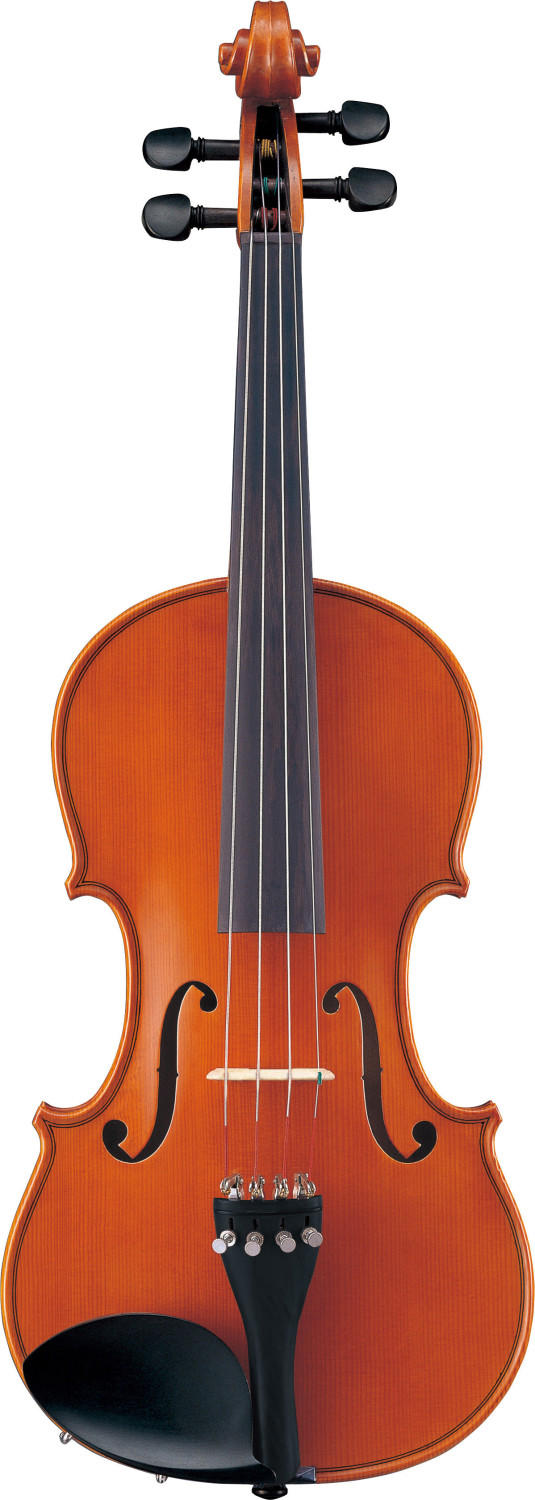

Ultimately, the adaptability of a stringed instrument to various genres and styles of music is a determining factor when selecting the best one for you. By considering the specific products and their specifications mentioned above, you can make an informed decision that suits your musical aspirations and preferences.
Price
The price range for stringed instruments can vary greatly depending on the brand, quality, and materials used. For those on a budget, there are affordable options that still offer good quality and playability. Fender Squier Stratocaster is a great entry-level electric guitar that offers exceptional value for its price, with a comfortable "C"-shaped maple neck and three single-coil pickups. For acoustic guitar enthusiasts, the Yamaha FG800 is a highly regarded option featuring a solid spruce top, mahogany back and sides, and a rosewood fingerboard. If your budget allows for a higher-priced instrument, the Gibson Les Paul Standard electric guitar is known for its legendary tone and craftsmanship, with features like a solid mahogany body and neck, as well as high-quality humbucker pickups. In the higher price range for acoustic guitars, the Taylor 814ce is an excellent choice with its solid sitka spruce top, Indian rosewood back and sides, and advanced electronics. Regardless of your budget, there are stringed instruments available at varying price points that cater to different musical preferences and skill levels.


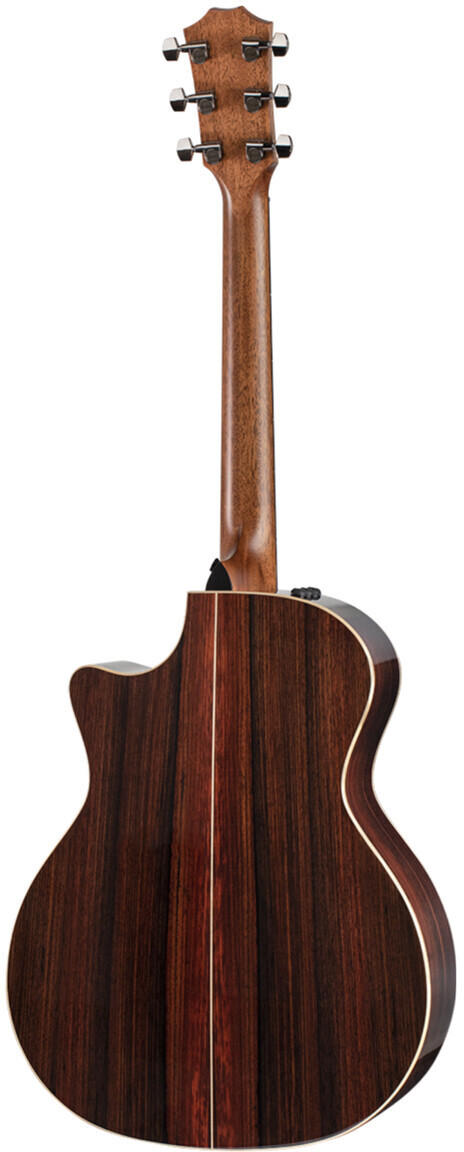
Variety of brands
Different brands offer different features and qualities that cater to different musical preferences and playing styles. One popular brand known for producing high-quality instruments is Fender. With their meticulous attention to detail and craftsmanship, Fender instruments are sought after by both beginners and professionals alike. Another notable brand is Gibson, renowned for their rich tone and iconic designs. Gibson instruments, such as the Les Paul or SG models, are favored by many rock and blues guitarists due to their powerful sound and superior build. Another brand worth considering is Yamaha, which specializes in a wide range of stringed instruments including guitars, violins, and cellos. Known for their reliability and affordable yet impressive sound quality, Yamaha offers options for both entry-level players and seasoned professionals. Ultimately, the choice between these brands depends on personal preference, budget, and the specific requirements of the musician.